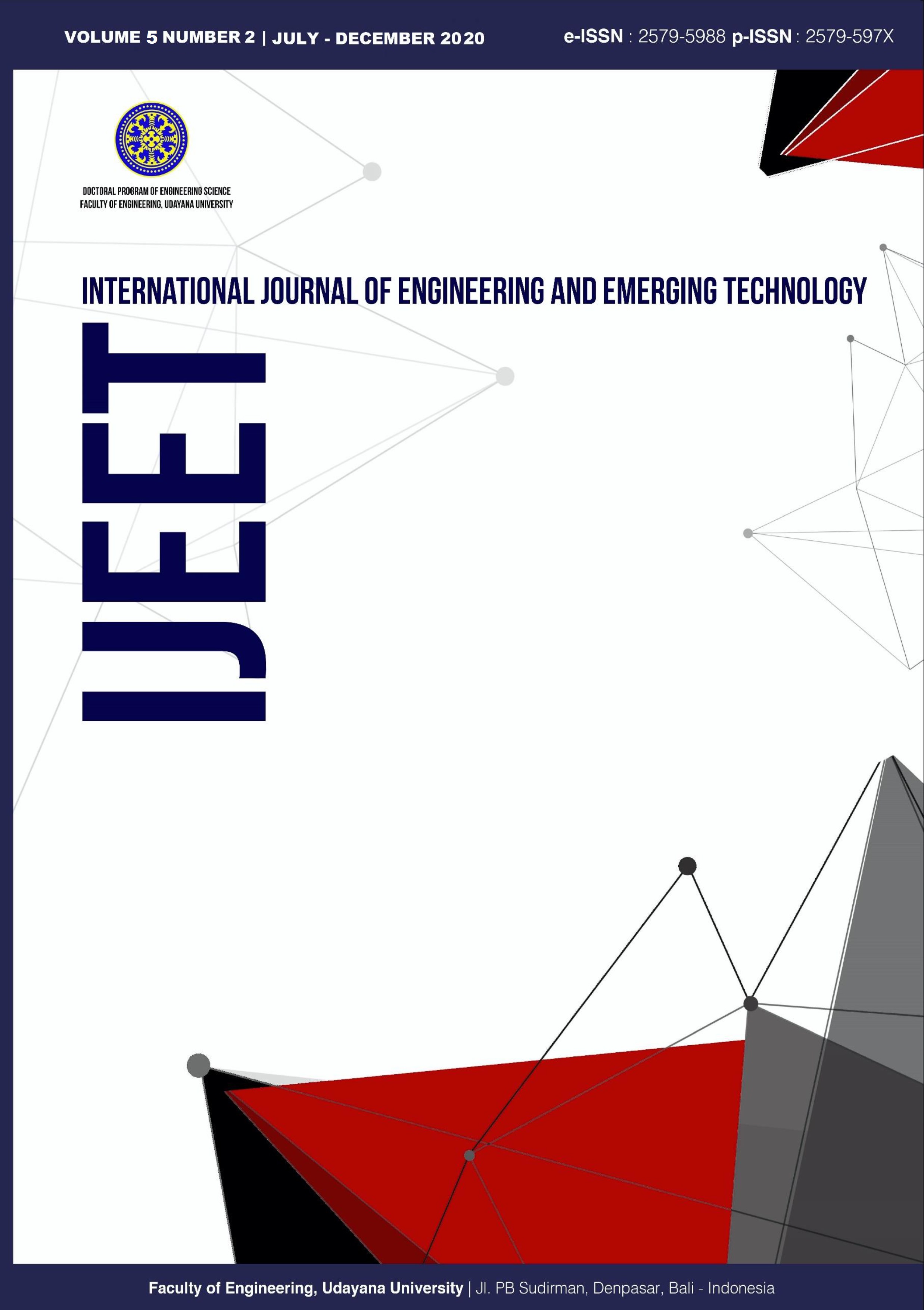Market Basket Analysis using FP-Growth Association Rule on Textile Industry
Abstract
Online shop is one of the technological developments that makes it easy for sellers and buyers to make transactions. A batch of data is produced from the process at an online shop and will be wasted if not utilized properly. An example is a batch of transaction data that may store hidden information that might benefit the online shop, such as information on customer transaction patterns or information on the relationship between two or more items that are most often purchased by customers. Based on that problem, this research conducts market basket analysis using one of the data mining methods, namely Association Rule with FP-Growth Algorithm, to find hidden information in a transaction data produced by an online shop. The data used in this research is an online shop transaction data that contains more than one item from November 2019 to December 2019 owned by one of the textile industries located in Ubud, Bali. The calculation of the FP-Growth Association Rule also tested using the Weka application. The results of market basket analysis are several associative rules related to the combination of best-selling items, such as “customers who buy Tigers Base Grey will have a 100% chance of buying Tribal Green too”. The result can be utilized by the textile industry owner to manage the layout of the online shop, add item recommendation features to the online shop based on items purchased by the customer, and also keep stock of the best-selling items to prevent running out of stock.
Downloads
References
[2] M. Kaur and S. Kang, “Market Basket Analysis: Identify the Changing Trends of Market Data Using Association Rule Mining,” Procedia Comput. Sci., vol. 85, pp. 78–85, 2016, doi: 10.1016/j.procs.2016.05.180.
[3] A. P. S. Iskandar, K. A. Shobirin, and K. Oka Saputra, “Analysis of Shopping Cart At Drugs Store By Using An Apriori Algorithm,” IJEET Int. J. Eng. Emerg. Technol., vol. 2, no. 1, p. 97, 2017, doi: 10.24843/ijeet.2017.v02.i01.p20.
[4] H. P. B. Surya, R. L. Rahardian, and M. Sudarma, “Application of Neural Network Overview In Data Mining,” IJEET Int. J. Eng. Emerg. Technol., vol. 2, no. 1, p. 94, 2017, doi: 10.24843/ijeet.2017.v02.i01.p19.
[5] S. I. Murpratiwi, A. . N. Narendra, and M. Sudarma, “Mapping Patterns Achievement Based on CRISP-DM and Self Organizing Maps (SOM) Methods,” IJEET Int. J. Eng. Emerg. Technol., vol. 2, no. 1, p. 1, 2017, doi: 10.24843/ijeet.2017.v02.i01.p01.
[6] D. Ardiada, P. A. Ariawan, and M. Sudarma, “Evaluation of Supporting Work Quality Using K-Means Algorithm,” IJEET Int. J. Eng. Emerg. Technol., vol. 3, no. 1, pp. 52–55, 2018.
[7] D. A. K. A. P, I. N. A. Prabawa, and P. A. Mertasana, “Implementation of Apriori Algorithm in Determining Tourism Visit Patterns to Bali,” Int. J. Eng. dan Emerg. Technol., vol. 4, no. 1, 2019.
[8] Ririanti, “Implementasi Algoritma Fp-Growth Pada Aplikasi Prediksi Persediaan Sepeda Motor ( Studi Kasus Pt . Pilar Deli Labumas ),” Pelia Inform. Budi Darma, vol. VI, no. 1, pp. 139–144, 2014.
[9] P. B. I. S. Putra, N. P. S. M. Suryani, and S. Aryani, “Analysis of Apriori Algorithm on Sales Transactions to Arrange Placement of Goods on Minimarket,” IJEET Int. J. Eng. Emerg. Technol., vol. 3, no. 1, pp. 13–17, 2018.
[10] P. A. Widya and M. Sudarma, “Implementation of EM Algorithm in Data Mining for Clustering Female Cooperative,” IJEET Int. J. Eng. Emerg. Technol., vol. 3, no. 1, pp. 75–79, 2018.
[11] I. G. N. A. S. Mahendra, I. B. L. M. Suta, and M. Sudarma, “Classification of Data Mining with Adaboost Method in Determining Credit Providing for Customers,” IJEET Int. J. Eng. Emerg. Technol., vol. 4, no. 1, pp. 31–36, 2019.
[12] R. Ruswati, A. I. Gufroni, and R. Rianto, “Associative Analysis Data Mining Pattern Against Traffic Accidents Using Apriori Algorithm,” Sci. J. Informatics, vol. 5, no. 2, pp. 91–104, 2018, doi: 10.15294/sji.v5i2.16199.
[13] B. Santosa, Data Mining Teori dan Aplikasi : Teknik Pemanfaatan Data untuk keperluan Bisnis, 1st ed. Yogyakarta: Graha Ilmu, 2007.
[14] Lismardiana, “Penerapan Algortima Apriori & FP-Growth untuk Pengambilan Keputusan di Pemko Medan,” J. Pembang. Perkota., vol. 6, no. 1, pp. 46–54, 2018, [Online]. Available: http://ejpp.balitbang.pemkomedan.go.id/index.php/JPP.
[15] B. Gupta and D. D. Garg, “FP-Tree Based Algorithms Analysis : FP-Growth, COFI-Tree and CT-PRO,” Int. J. Comput. Sci. Eng., vol. 3, no. 7, pp. 2691–2699, 2011

 Indexed By
Indexed By







